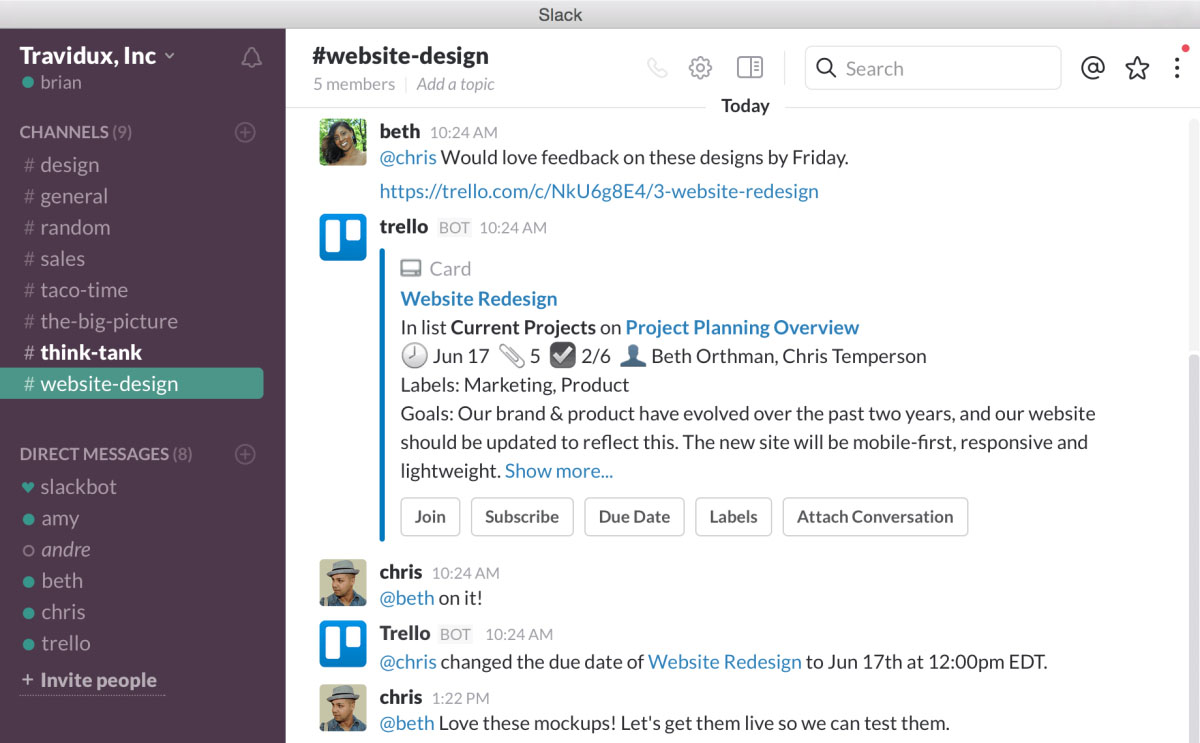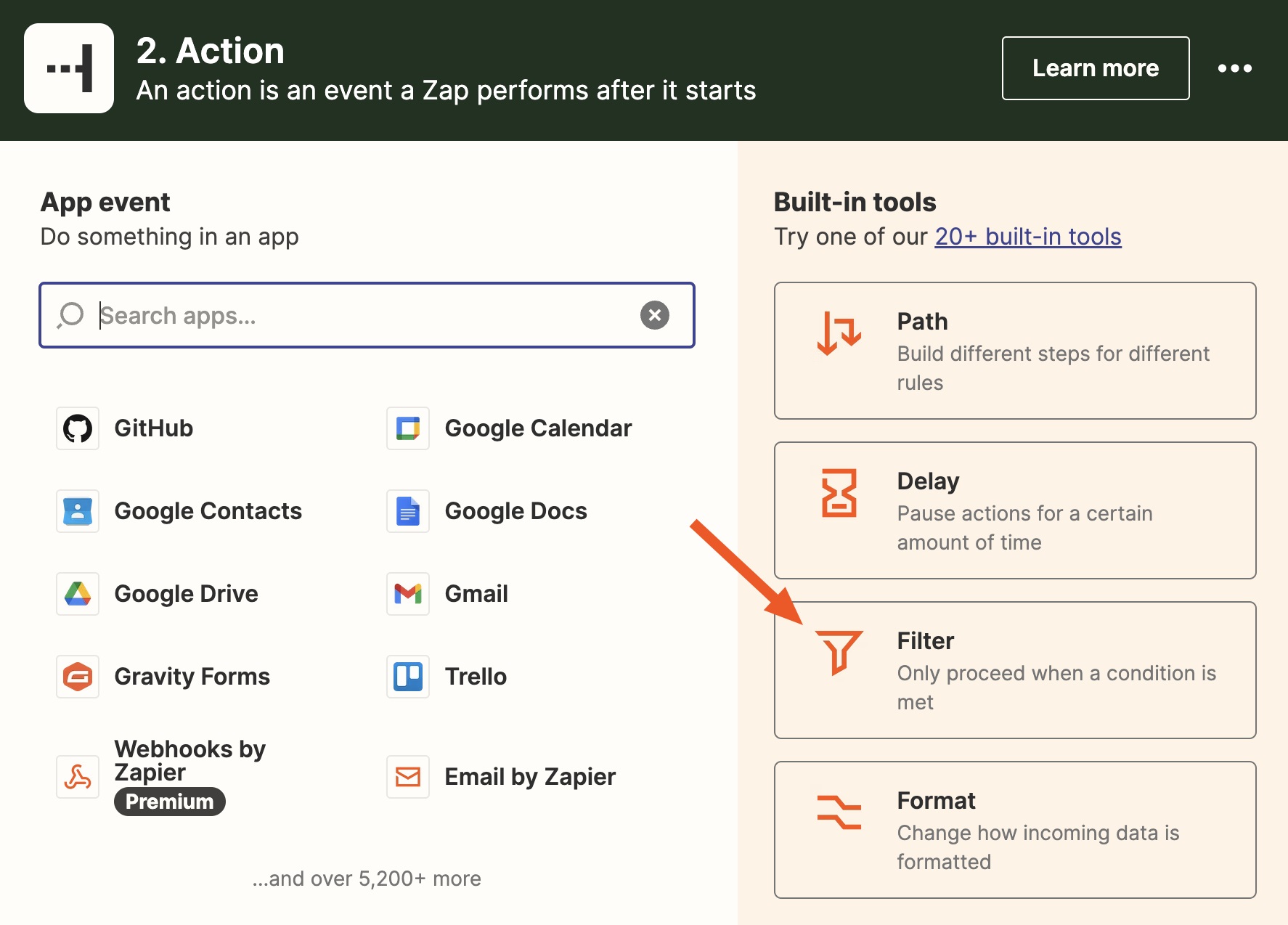Introduction
Effective project management is crucial for the success of any organization. With the rapid advancement of technology, new tools and platforms have emerged to streamline project management processes and boost team collaboration. One such platform that has gained significant popularity in recent years is Slack.
Slack is not just another messaging app; it is a powerful project management tool that allows teams to communicate, collaborate, and stay organized in one place. It provides a robust set of features that enable seamless project coordination, file sharing, real-time messaging, and much more.
In this article, we will explore what project management entails, delve into the features and benefits of using Slack for project management, and provide some best practices for effectively utilizing Slack in your project management endeavors.
Project management involves planning, organizing, and executing tasks to achieve specific goals within a defined timeframe and budget. It encompasses various processes, such as defining project objectives, creating a project plan, assigning tasks to team members, tracking progress, and ensuring successful project completion.
Traditionally, project management was carried out using spreadsheets and emails, which often led to communication gaps, scattered information, and inefficient collaboration. However, with the rise of project management software like Slack, teams have gained a centralized platform that facilitates seamless communication, simplifies task management, and improves overall project coordination.
Now, let’s dive into what makes Slack an excellent choice for project management and how it can revolutionize the way your team works together.
What Is Project Management
Project management is the systematic approach of initiating, planning, executing, controlling, and closing a project. It involves coordinating various resources, such as time, budget, and personnel, to achieve specific objectives within a defined timeframe. Project management ensures the successful completion of projects by organizing tasks, allocating resources, and monitoring progress.
The key elements of project management include defining project goals, creating a project plan, identifying and assigning tasks, establishing timelines, managing resources, tracking progress, and evaluating project outcomes. It involves collaboration and communication among team members to ensure everyone is aligned and working towards a common goal.
Effective project management brings numerous benefits to organizations, such as improved efficiency, timely delivery of projects, better resource allocation, and increased productivity. It allows businesses to adapt to changes, manage risks and uncertainties, and optimize project outcomes.
Project management methodologies, such as Agile, Waterfall, and Scrum, provide frameworks and guidelines for managing projects. These methodologies offer a structured approach to project management, outlining specific processes and best practices to maximize efficiency and effectiveness.
In a nutshell, project management is the discipline of planning, organizing, and executing a series of tasks to achieve project objectives. By employing project management principles and using specialized tools like Slack, teams can streamline their workflows, enhance collaboration, and achieve successful project outcomes.
What Is Slack
Slack is a cloud-based collaboration and communication platform that revolutionizes the way teams work together. It serves as a centralized hub for team communication, project management, file sharing, and more. With its user-friendly interface and extensive features, Slack has become a go-to tool for organizations worldwide.
At its core, Slack is a messaging app that enables real-time communication among team members. It offers chat channels, direct messaging, and voice and video calls, allowing teams to connect and collaborate seamlessly. Slack provides the flexibility to create public channels for team-wide discussions and private channels for more focused conversations.
Moreover, Slack goes beyond simple messaging. It integrates with a wide range of apps and tools, such as project management software, document sharing platforms, and file storage services, making it a central hub for all team collaboration needs. This integration feature allows teams to bring all their tools and workflows into one place, eliminating the need for switching between multiple applications.
With Slack, you can create separate channels for different projects or departments, ensuring that discussions and files are organized and easily accessible. Team members can share documents, images, and other files within the platform, keeping relevant project assets in one location.
One of the standout features of Slack is its powerful search functionality. Users can quickly search for specific messages, files, or even keywords across the entire platform. This makes finding information or retrieving past discussions a breeze, saving valuable time and eliminating the frustration of digging through countless emails or scattered documents.
Slack also offers a wide range of customization options, allowing users to personalize their workspace. From customizing the appearance and notification settings to integrating external apps and services, Slack provides a highly customizable experience that caters to the unique needs of each team.
In summary, Slack is a versatile and comprehensive collaboration platform that combines real-time messaging, project management features, and integration capabilities into one powerful tool. By leveraging Slack’s functionalities, teams can enhance their communication, streamline project management, and foster a more productive and collaborative work environment.
Benefits of Using Slack Project Management
Implementing Slack as a project management tool offers a multitude of benefits for teams and organizations. Let’s explore some of the key advantages of using Slack for project management:
- Streamlined Communication: Slack provides a centralized platform for team communication, eliminating the need for scattered email threads and disjointed conversations. With real-time messaging, chat channels, and direct messaging, teams can collaborate seamlessly and stay updated on project developments.
- Enhanced Collaboration: Slack’s collaboration features, such as file sharing, document collaboration, and integration with other tools, foster a collaborative work environment. Team members can easily share project assets, provide feedback, and work together in real-time, resulting in improved productivity and efficiency.
- Improved Transparency: With Slack, team members have visibility into project discussions, updates, and files shared within channels. This transparency enables better alignment, reduces misunderstandings, and keeps everyone on the same page, enhancing project coordination and productivity.
- Efficient Task Management: Slack integrates with project management tools like Asana, Trello, and Jira, allowing teams to manage tasks directly within the platform. This eliminates the need for switching between multiple tools and provides a centralized view of project tasks, deadlines, and progress.
- Flexibility and Scalability: Slack is highly scalable and can accommodate teams of all sizes, from small startups to large enterprises. It offers flexibility in creating and organizing channels and can adapt to the evolving needs of the project and team structure.
- Real-time Collaboration: Slack’s instant messaging capabilities enable teams to have quick discussions, seek clarification, and resolve issues in real-time. This real-time collaboration fosters faster decision-making, reduces delays, and keeps projects moving forward.
- Powerful Search Functionality: Slack’s search functionality allows users to quickly find information, messages, and files across channels and conversations. This saves time, promotes knowledge sharing, and ensures important project details are easily accessible.
- Mobile Accessibility: Slack offers mobile apps for iOS and Android devices, enabling team members to stay connected and engaged even on the go. This flexibility ensures that project updates and discussions can be accessed anytime, anywhere.
In summary, incorporating Slack as a project management tool brings numerous benefits, including improved communication, collaboration, transparency, task management, scalability, real-time collaboration, powerful search functionality, and mobile accessibility. By leveraging these advantages, teams can enhance their project management processes and drive success in their endeavors.
Features of Slack Project Management
Slack offers a robust set of features that make it a powerful tool for project management. Let’s explore some of the key features that contribute to its effectiveness in managing projects:
- Chat Channels: Slack allows teams to create chat channels to organize project-related conversations. Channels can be dedicated to specific projects, departments, or topics, providing a structured communication environment.
- Direct Messaging: Slack supports direct messaging, enabling team members to have one-on-one conversations. This feature is useful for individual discussions, seeking clarifications, or addressing specific project-related matters.
- File Sharing: Slack provides seamless file sharing capabilities, allowing team members to upload and share project documents, images, and other files. This ensures that all project-related assets are easily accessible and centralized within the platform.
- Integration: Slack offers extensive integration capabilities, allowing teams to connect their project management tools, document collaboration platforms, and other third-party apps. This integration streamlines workflows and enables teams to access and update project-related information without leaving Slack.
- Task Management: Slack integrates with popular task management tools like Asana, Trello, and Jira, enabling teams to create, assign, and track tasks within the platform. This feature provides a centralized view of project tasks, progress, and deadlines.
- Notifications: Slack’s notification system ensures that team members stay informed about project updates, new messages, or mentions. Users can customize notification settings to receive real-time alerts based on their preferences.
- Search Functionality: Slack offers a powerful search feature that allows users to search for messages, files, channels, or even specific keywords. This makes it easy to find and retrieve information, ensuring that important project details are always accessible.
- Reactions and Emoji: Slack allows users to react to messages with emojis, providing a quick and expressive way to acknowledge or respond to project-related discussions. This feature helps teams engage and collaborate effectively.
- Video and Voice Calls: Slack supports video and voice calls, enabling teams to have face-to-face or voice conversations when needed. This feature is particularly useful for remote teams or when discussing complex project matters.
These are just a few of the many powerful features that Slack provides for project management. By leveraging these features, teams can streamline communication, collaborate more effectively, manage tasks efficiently, and ultimately drive successful project outcomes.
How to Use Slack for Project Management
Using Slack for project management involves leveraging its features and implementing best practices to enhance team communication, collaboration, and task management. Here are some steps to effectively utilize Slack for project management:
- Create Dedicated Channels: Start by creating dedicated channels for your project. Create channels based on project phases, departments, or specific topics. This helps keep discussions organized and easily accessible.
- Set Clear Channel Guidelines: Establish clear guidelines for channel usage, such as communicating project updates, sharing relevant files, or discussing specific topics. Setting expectations ensures that everyone is aligned on how to use the channel effectively.
- Integrate Project Management Tools: Integrate your project management tools, such as Asana, Trello, or Jira, with Slack. This allows you to centralize task management and provide real-time updates on project progress within relevant channels.
- Utilize Direct Messaging: Use direct messaging in Slack for one-on-one conversations or to address specific project-related matters. This helps maintain focused discussions and promotes effective communication among team members.
- Share Files and Documents: Take advantage of Slack’s file sharing capabilities to upload and share project documents, images, and other files. This ensures that all project-related assets are in one place and easily accessible to your team.
- Encourage Collaboration: Encourage team members to collaborate and provide feedback within channels. Utilize Slack’s collaboration features, like thread replies and reactions, to foster an environment of active participation and idea sharing.
- Customize Notifications: Customize notification settings to ensure that team members receive relevant updates without being overwhelmed. Adjust notification preferences to receive alerts for mentions, specific channels, or important project-related discussions.
- Maximize Search Functionality: Make use of Slack’s powerful search functionality to find past discussions, messages, or shared files. This helps retrieve specific project details or information quickly, saving time and improving productivity.
- Facilitate Video and Voice Calls: When needed, utilize Slack’s video and voice call features to have discussions, clarify project requirements, or address any challenges. This helps maintain clear communication, especially for remote or dispersed teams.
- Encourage Regular Check-ins: Schedule regular check-ins within Slack to keep everyone updated on project progress, challenges, and upcoming tasks. This ensures that team members stay informed and fosters a sense of accountability and collective responsibility.
By following these steps and utilizing the features and capabilities of Slack, your team can effectively manage projects, enhance collaboration, and improve overall project outcomes.
Best Practices for Slack Project Management
To maximize the benefits of using Slack for project management, it is important to follow some best practices. These practices can help streamline communication, enhance collaboration, and improve overall project efficiency. Here are some key best practices to consider:
- Establish Clear Channel Naming Conventions: Use standardized naming conventions for channels to ensure consistency and easy identification. Include relevant project or department names to make it easier for team members to locate the appropriate channels.
- Set Channel Guidelines and Expectations: Clearly communicate channel guidelines and expectations to all team members. Define the purpose of each channel, how often to check in, and any specific posting guidelines to maintain a focused and productive communication environment.
- Encourage Proper Channel Usage: Encourage team members to use appropriate channels for discussions and file sharing. Remind them to avoid cross-posting or duplicating conversations, ensuring that information is organized and easily accessible to the relevant stakeholders.
- Utilize Threaded Replies: When discussing specific topics within a channel, encourage the use of threaded replies. This helps keep conversations organized and prevents important information from getting lost in the channel’s main thread.
- Create Channel Notifications: Set up channel notifications strategically to ensure team members receive important updates without getting overwhelmed by excessive notifications. Customize notifications based on the relevance and urgency of each channel in order to maintain focus and productivity.
- Regularly Review and Archive Channels: Regularly review channels to identify any inactive or unnecessary ones that can be archived. This helps declutter Slack and ensures that active channels remain focused and relevant.
- Encourage Collaboration and Engagement: Foster a collaborative environment by encouraging active participation and engagement within channels. Encourage team members to share their thoughts, ask questions, and provide feedback to drive effective collaboration and problem-solving.
- Implement Security Measures: Ensure that appropriate security measures are in place to protect sensitive project information. Enable two-factor authentication, control access levels, and educate team members on best practices for maintaining data security within Slack.
- Promote Continuous Learning and Training: Provide ongoing training and resources to help team members make the most of Slack’s features and integrations. Regularly share tips, tricks, and best practices to ensure everyone is using Slack effectively for project management.
- Regularly Evaluate and Optimize: Continuously evaluate your team’s usage of Slack and seek feedback from team members. Identify areas for improvement and optimize your Slack project management processes accordingly to ensure maximum productivity and efficiency.
By implementing these best practices, your team can optimize Slack for project management, creating a collaborative and streamlined environment that enhances communication, fosters effective collaboration, and contributes to successful project outcomes.
Conclusion
Slack has emerged as a powerful project management tool that revolutionizes team collaboration and communication. Its extensive features, such as real-time messaging, file sharing, task management integration, and powerful search functionality, make it an ideal platform for managing projects effectively.
By utilizing Slack for project management, teams can streamline communication, enhance collaboration, improve transparency, and boost productivity. The centralized nature of Slack brings project-related discussions, files, and updates into one organized location, eliminating the need for scattered emails and multiple tools.
Through clear channel naming conventions, guidelines, and effective usage, Slack helps teams stay organized and focused on project objectives. Communication is enhanced through direct messaging, threaded replies, and video or voice calls, facilitating efficient collaboration and decision-making.
The integration capabilities of Slack enable teams to connect their favorite project management tools, file storage platforms, and other applications, creating a seamless workflow and reducing time spent switching between different platforms.
Following best practices such as setting clear expectations, customizing notifications, and fostering collaboration within channels helps teams fully harness the potential of Slack for project management. Regular evaluation and optimization ensure continuous improvement in project management processes.
In conclusion, Slack provides an excellent solution for managing projects efficiently with its robust features, intuitive interface, and seamless integrations. By leveraging Slack’s capabilities and adhering to best practices, teams can enhance communication, collaboration, and overall project outcomes. So, embrace Slack as your go-to project management tool, and watch your team’s productivity soar to new heights.

























